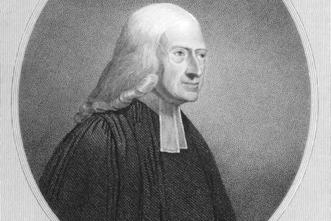John Wesley was the pioneer of small-group evangelism. By the end of the 18th century, Wesley had developed more than 10,000 cells groups (called classes).”‘ Hundreds of thousands of people participated in his small-group system.”
Wesley wasn’t persuaded that someone had made a decision for Christ until that person became involved in a small group. Wesley was more interested in discipleship than in a decision. The classes served as an evangelistic tool (most conversions occurred in this context) and as a discipling agent.” George G. Hunter III writes, “To Wesley, evangelism … took place primarily in the class meetings and in people’s hearts in the hours following the class meetings.” Wesley acknowledged that the beginnings of a person’s faith could be incubated more effectively in a warm Christian environment than in the chill of the world.
As the forerunner of the modern cell movement, Wesley promoted evangelism that led to rapid multiplication. Hunter notes, “He was driven to multiplying ‘classes’ for these served best as recruiting groups, as ports of entry for new people, and for involving awakened people with the gospel and power.”21 Wesley would preach and then invite the people to join a class. Apparently, they multiplied primarily as a result of planting new classes, much like the emphasis on cell planting today.22 The primary objective in his preaching was starting new classes.23 T.A. Hegre notes,
I believe that the success of Wesley was due to his habit of establishing small groups. His converts would meet regularly in groups of about a dozen people. If the group became too large, it would divide, and it might continue to divide again and again.24
Small-group ministry constantly faces a dilemma: maintaining the intimacy of a small group while fulfilling Christ’s command to evangelize. Cell multiplication is the only proven way to remain small while faithfully reaching out. Wesley practiced this principle and laid the foundation for the modern cell-church explosion.













